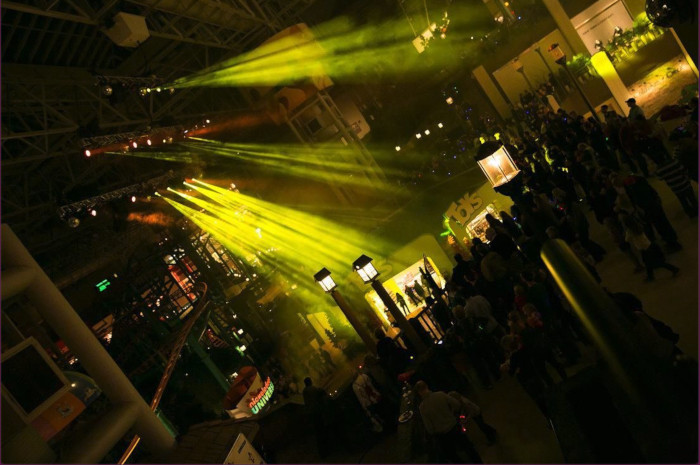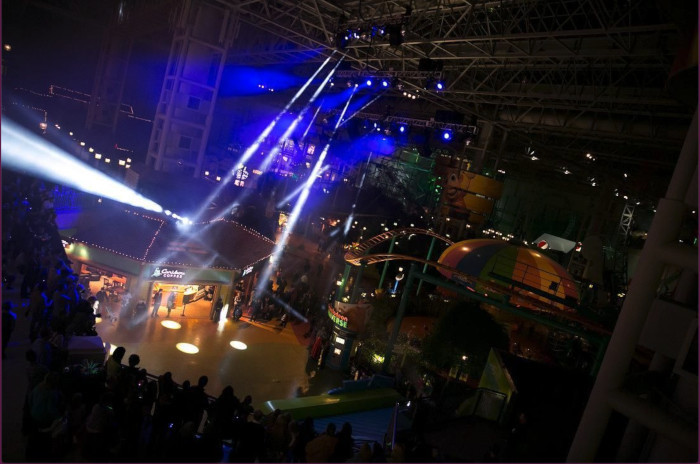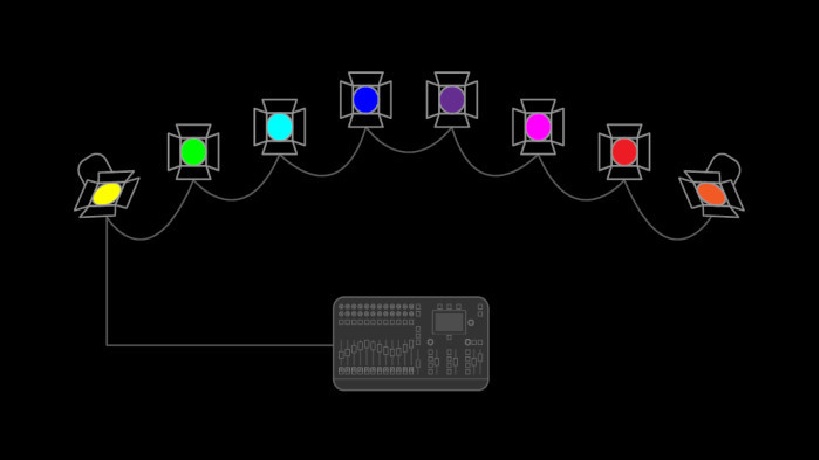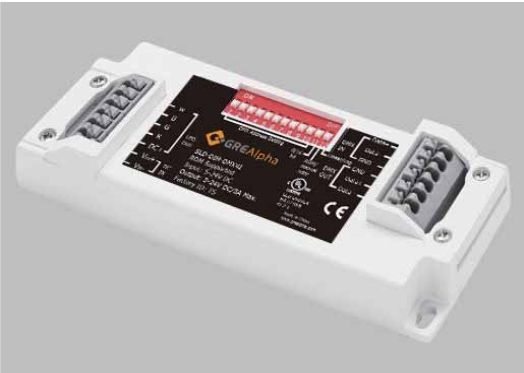How to Pick the Right DMX LED Controller
Artists and architects are now using LEDs to form moving images on a larger than life scale for stadiums, concert halls, commercial spaces and for architectural lighting. The science is called solid-state lighting (SSL) and the effects can be awe inspiring and overwhelmingly beautiful.
Rather than canvas and brushes, the LED artist needs electronic tools, like a DMX control system. But before we jump into the nitty-gritty of the science, let's take a look at the art. Let's see just what an award-winning team of entertainment innovators can do with this marvelous media.
LEDs – Tools for Artists and Architects
When the Mall of America threw a party for their 25th birthday they went big. The development team behind the show, Quantum Creative Studios, created a completely new and original nighttime spectacular lightshow. According to Quantum Creative Studios, "Always Here for You." is a high energy nighttime spectacular featuring automated intelligent lighting and special effects all controlled by streaming DMX. The team at Quantum Creative Studios created and produced this show in celebration of Mall of America's 25th Birthday where it delights and surprises thousands of guests each week."

Photo credit: "Mall of America/Quantum Creative Studios"
Photo credit: "Mall of America/Quantum Creative Studios"
Guests were treated to a seven-minute nightly experience featuring original music composed by Broadway songwriters Alan Zachary and Michael Weiner along with dazzling lights many elements of surprise. Before we get into the technicalities of DMX technology soon, click the link to enjoy "Always Here for You" in action.
A Word About the Technology
In order to make the magic happen, the LEDs have to switch on and off, vary in intensity, and most importantly, do it in coordination with each other from a dynamic pattern you establish from a remote computerized controller.
It's accomplished through LED power supplies, aka LED controllers. And one of the most widely used standards for control is known as DMX.
What is DMX?
DMX stands for digital multiplex, an electronic protocol used to control LED lighting in a wide variety of applications. It is a standard widely embraced worldwide, allowing one controller to control many lighting devices from a wide range of manufacturers.
The simplest way to illustrate what DMX is and what it can do for you is with two illustrations:
Life before DMX

Image source: GRE Alpha
Each fixture needs an individual cable to the controller – a wiring nightmare!
Life with DMX
Image source: GRE Alpha
With DMX, only the first fixture attaches to the controller and the DMX Control Signal, the rest are daisy chained. Wiring is clean and easy.
The DMX Universe
With DMX, there can be as many as 512 "channels", or individual devices under the control of an individual controller. If you are running modern lighting fixtures, the number must be divided by four to 128 – why? Because each fixture will have four LEDs, one each for red, blue, green or amber. Each LED needs to be controlled individually to create exactly the color you want.
Digital Control
The next obvious question – If the same cable is entering each fixture and controlling each channel, how can each channel get its own individualized marching orders from the DMX control signal? Easy! – Digital control.
The power source for solid-state lighting application, the LED power supply, is most often referred to as a dimming module, or sometimes simply as a LED driver. To see how the digital control aspect works, take a look at this side view of the SLD-DIM-DMX dimming module from GRE Alpha.

Image source: GRE Alpha
Notice the nine switches? Those of you familiar with the arcane science of Boolean Algebra will remember that 29 is 512. Thus, by setting each switch, from number one to number nine to either "up" or "down", the channel controlled by this dimming module has a unique address among the 512 possibilities. It will only receive, and respond to, the message intended for it and it alone.
Important Factors to Consider When You Pick Your DMX LED Controller
Here's a listing of the considerations you'll need to ponder when choosing the right DMX LED controller for your lighting application.
- Four Diodes, not Just Three The first thing to consider is that you, as a lighting designer or architect, will want to be able to create the stunning, sizzling lighting displays we illustrated earlier. To do so, your fixtures must contain not only the traditional red, blue, green LEDs, but also amber. The SLD-DIM-DMX4 LED Dimming Module from GRE Alpha is a four-channel device that does just that.
- 12V and 24 Volt Operation Most modern lighting situations will supply input voltages of 12V or 24V to the LED. Look for a unit that can work with inputs ranging from 4V to 24V.
- 8-bit or 16-bit Resolution The higher the bit resolution, the more precisely color variations can be rendered. Even a low-end computer monitor has 16-bit resolution and not 8-bit resolution. Eight bits is so 20th century, but some lighting situations, even modern ones still only go up the eight bits.
- RDM Protocol for Bi-Directional Entertainment Lighting It's obvious that the DMX LED controller must communicate its directions to the dimming module so the LEDs can be manipulated, but if the dimming module can send feedback back to the controller, the whole system function better, and there will also be significant savings of electrical power.
- RJ45 Connectors or Spring-Loaded Terminal Blocks It's an important consideration, because this is how the controller communicates instructions to the dimmers. One way is RJ45 connectors and cables. These are the same devices that are used to effect ethernet connections between routers and computers. They are a solid, reliable, universal standard and they are available everywhere. Spring-loaded terminal blocks are also noted for their solid reliability.

SLD-DIM-DMX. The DMX RGBW Dimming module from GRE Alpha, illustrated with spring-loaded terminal blocks. - Electrical Isolation With electrical isolation, all aspects of the DMX LED controller are electrically isolation from ground. In some applications, perhaps when deploying stadium LED drivers or in outdoor design situations, isolation is critical for safety and quality, and in others it is overkill. The SLD-DIM-DMX4 offers both isolated and more economical non-isolated versions.
- Dimming Curve Selection The human eye doesn't perceive the changes in light's intensity linearly. By being able to choose an alternate, non-linear scale, the dimmer can, in effect scale lighting changes more exactly to what the audience perceives. This is just another example of the scope of control that SSL offers artists and designers.
- Efficiency and Power It's never good to waste power, and wasted power creates heat, which can be a fire hazard. Look for a controller that operates at full capacity at 97% efficiency.
If you'd like to know more about other types of LED power supplies, please visit out news and resources sections. Want to learn more about the dynamic lighting miracles you can achieve with the SLD-DIM-DMX4? Contact GRE Alpha.
Back to index